|
Collaborators
|
Bonn, Max Planck Institute for Radio Astronomy in Bonn
Caltech, California Institute of Technology
Columbia, Columbia University in the city of New York
Fermilab, Fermi National Accelerator Laboratory
JPL, Jet Propulsion Laboratory
KEK, High Energy Accelerator Research Organization
KICP, Kavli Institute for Cosmological Physics at the University of Chicago
KIPAC, Kavli Institute for Particle Astrophysics and Cosmology at the Stanford University
Manchester, University of Manchester
Miami, University of Miami
Michigan, University of Michigan
Oslo, University of Oslo
Oxford, University of Oxford
Princeton, Princeton University
|
|
|
Also participating
|
Goddard, Goddard Space Flight Center
|
|
|
|
 | Bonn, Max Planck Institute for Radio Astronomy in Bonn |
 | Caltech, California Institute of Technology |
 | Columbia, Columbia University in the city of New York |
 | Fermilab, Fermi National Accelerator Laboratory |
 | JPL, Jet Propulsion Laboratory |
 | KEK, High Energy Accelerator Research Organization |
 | KICP, Kavli Institute for Cosmological Physics at the University of Chicago |
 | KIPAC, Kavli Institute for Particle Astrophysics and Cosmology at the Stanford University |
 | Manchester, University of Manchester |
 | Miami, University of Miami |
 | Michigan, University of Michigan |
 | Oslo, University of Oslo |
 | Oxford, University of Oxford |
 | Princeton, Princeton University |
|
|
| |
 MPIfR Bonn is responsible for the design, construction and characterization of the total power assemblies of 108 W-band, 6 Q-band and 2 Ka-band receivers. The group will also help with the assembly and optimization of the polarimeter subarrays (68 W-band receivers) before their integration into the large cryostats. MPIfR Bonn is responsible for the design, construction and characterization of the total power assemblies of 108 W-band, 6 Q-band and 2 Ka-band receivers. The group will also help with the assembly and optimization of the polarimeter subarrays (68 W-band receivers) before their integration into the large cryostats.
|
| |
Faculty/Senior Scientist | Graduate Student |
Dorothea Samtleben
| Alison Brizius (visiting from the University of Chicago)
|
|
| |
|
|
| |
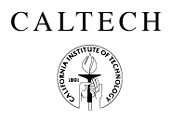 Caltech is responsible for the procurement of the InP MMIC wafers from Northrop Grumman, and the evaluation of the wafers and delivery of the resulting chips to the module integrators (FNAL, SLAC and Manchester). They will lead an effort on the redesign and test of 44 and 95 GHz modules for improved performance and ease of assembly. Caltech is also responsible for upgrade and operation of the Chajnantor Test Facility, logistics in Chile, assistance with equipment deployment, assistance with observations, and development of the telescope control and observing software in conjunction with other institutions. Caltech is responsible for the procurement of the InP MMIC wafers from Northrop Grumman, and the evaluation of the wafers and delivery of the resulting chips to the module integrators (FNAL, SLAC and Manchester). They will lead an effort on the redesign and test of 44 and 95 GHz modules for improved performance and ease of assembly. Caltech is also responsible for upgrade and operation of the Chajnantor Test Facility, logistics in Chile, assistance with equipment deployment, assistance with observations, and development of the telescope control and observing software in conjunction with other institutions.
|
| |
Faculty/Senior Scientist | PostDoctoral/Fellow | Engineer |
Tim Pearson
Simon Radford
Tony Readhead
Martin Shepherd
| Kieran Cleary
Clive Dickinson (now at Manchester)
Oliver King (Keck Institute Fellow)
Rodrigo Reeves
| Jose Cortes
Cristobal Jara
Freddy Munoz
|
|
| |
|
|
| |
 Columbia is responsible for leading the effort to adapt the existing cryostat design for Phase II, and will fabricate and test the first two cryostats. Columbia will be responsible for the integration and optimization of the Q/Ka-band receiver, and will lead the effort to integrate this receiver with the corresponding telescope. Columbia is responsible for leading the effort to adapt the existing cryostat design for Phase II, and will fabricate and test the first two cryostats. Columbia will be responsible for the integration and optimization of the Q/Ka-band receiver, and will lead the effort to integrate this receiver with the corresponding telescope.
QUIET @ Columbia
|
| |
Faculty/Senior Scientist | PostDoctoral/Fellow | Graduate Student |
Michele Limon
Amber Miller
| Will Grainger (now at Cardiff)
Ross Williamson (now with the SPT at The University of Chicago)
Jon Zwart
| Robert DuMoulin
Laura Newburgh
|
|
| |
|
|
| |
 Fermilab has modestly contributed to Phase I since June 2007: several calibration wiregrids were built and used in detector optimization, commissioning, and calibration; a 20K black body was fabricated; and FE analysis of vacuum windows was performed. Funding from within Fermilab/DOE is being sought to participate in Phase II. The primary item to be delivered is production tooling, labor, quality assurance, and supervision to assemble approximately 1500 W-band modules, adapting existing tools in the Sidet facility to perform automatic assembly operations. The group also seeks to host and participate in the assembly, integration, and commissioning of one W-band 500-element receiver, perform FE analysis of the larger windows, and fabricate calibration grids. Fermilab has modestly contributed to Phase I since June 2007: several calibration wiregrids were built and used in detector optimization, commissioning, and calibration; a 20K black body was fabricated; and FE analysis of vacuum windows was performed. Funding from within Fermilab/DOE is being sought to participate in Phase II. The primary item to be delivered is production tooling, labor, quality assurance, and supervision to assemble approximately 1500 W-band modules, adapting existing tools in the Sidet facility to perform automatic assembly operations. The group also seeks to host and participate in the assembly, integration, and commissioning of one W-band 500-element receiver, perform FE analysis of the larger windows, and fabricate calibration grids.
|
| |
Faculty/Senior Scientist | Engineer |
Fritz DeJongh
Scott Dodelson
David McGinnis
Hogan Nguyen
Albert Stebbins
| Donna Kubik
|
|
| |
|
|
| |
 JPL is responsible for the design of the MMIC amplifiers using 35 nm technology and detector circuits using HRL Tunnel Diode technology. JPL personnel will also monitor both the NGC and HRL contracts. In addition, JPL will be working closely with Caltech on module improvements, supporting design and assembly activities. JPL will provide a low level of support for the MMICs and modules after delivery and deployment. JPL will provide design support for the QUIET-II optics, verifying the optical performance of the mechanical designs and comparing with the measured optical performance. JPL is responsible for the design of the MMIC amplifiers using 35 nm technology and detector circuits using HRL Tunnel Diode technology. JPL personnel will also monitor both the NGC and HRL contracts. In addition, JPL will be working closely with Caltech on module improvements, supporting design and assembly activities. JPL will provide a low level of support for the MMICs and modules after delivery and deployment. JPL will provide design support for the QUIET-II optics, verifying the optical performance of the mechanical designs and comparing with the measured optical performance.
|
| |
Faculty/Senior Scientist | Engineer |
Mark Dragovan
Todd Gaier
Krzystof Gorski
Charles Lawrence
Erik Leitch
Michael Seiffert
| April Campbell
Douglas Dawson
William Imbriale
Pekka Kangaslahti
Steve Smith
Mary Wells
Stephanie Xenos
|
|
| |
|
|
| |
 KEK is responsible for the integration, optimization/characterization and deployment of a W-band receiver system, for the production and testing of the ADCs for all receivers, and for global design and development of the data acquisition system including the monitoring system, the latter a responsibility shared with Chicago. KEK is responsible for the integration, optimization/characterization and deployment of a W-band receiver system, for the production and testing of the ADCs for all receivers, and for global design and development of the data acquisition system including the monitoring system, the latter a responsibility shared with Chicago.
KEK is responsible for setting up an analysis center and contributing to development of pipeline software for data processing and analyses.
|
| |
Faculty/Senior Scientist | Graduate Student |
Masaya Hasegawa
Masashi Hazumi
Takeo Higuchi
Osamu Tajima
| Chinone Yuji
|
|
| |
|
|
| |
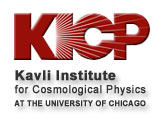 Chicago will be responsible for the integration and optimization/characterization of the first W-band receiver, a responsibility shared with Fermilab. They will support an Analysis Center and develop one of the two analysis pipelines. Chicago is also responsible for the production and testing of two electronics systems for all receivers: the Module Assembly Boards inside the cryostats and the Analog Electronics Boards which are mounted on the cryostats. Responsibility for the DAQ and monitoring systems is shared with KEK. Chicago will be responsible for the integration and optimization/characterization of the first W-band receiver, a responsibility shared with Fermilab. They will support an Analysis Center and develop one of the two analysis pipelines. Chicago is also responsible for the production and testing of two electronics systems for all receivers: the Module Assembly Boards inside the cryostats and the Analog Electronics Boards which are mounted on the cryostats. Responsibility for the DAQ and monitoring systems is shared with KEK.
|
| |
Faculty/Senior Scientist | PostDoctoral/Fellow | Engineer | Graduate Student | Undergraduate Student |
Osamu Tajima (visiting from KEK)
Bruce Winstein
| Matt Hedman (now at Cornell University)
Dan Kapner (now at Micro Encoder Inc. Kirkland, WA)
Akito Kusaka
Dorothea Samtleben (now at MPI, Bonn)
| Mircea Bogdan
Dale Sanford
| Colin Bischoff
Alison Brizius
Immanuel Buder
Yuji Chinone (visiting from KEK)
Kendrick Smith (now a Fellow at Princeton)
Keith Vanderlinde (now a Fellow at McGill with SPT)
| Emma Curry
|
|
| |
|
|
| |
 KIPAC is responsible for the manufacture and testing of the Q-band modules, and will design the Ka-band modules, septum polarizers and OMTs, in collaboration with Manchester University. We intend for the Q-band fabrication work to be carried out at the SLAC National Accelerator Laboratory using separate funds and for the Ka design and prototyping work to be carried out by campus members of KIPAC. KIPAC is responsible for the manufacture and testing of the Q-band modules, and will design the Ka-band modules, septum polarizers and OMTs, in collaboration with Manchester University. We intend for the Q-band fabrication work to be carried out at the SLAC National Accelerator Laboratory using separate funds and for the Ka design and prototyping work to be carried out by campus members of KIPAC.
|
| |
|
|
| |
 Manchester will lead the design, production, testing and integration of 18 Ka-band modules in collaboration with the other QUIET institutions producing modules. Manchester will lead the design, production, testing and integration of 18 Ka-band modules in collaboration with the other QUIET institutions producing modules.
Manchester will also deliver 16 split-block septum polarizers based on their own design on a timescale compatible with the Ka-band module delivery schedule.
|
| |
Faculty/Senior Scientist | Graduate Student |
Richard Davis
Clive Dickinson
Danielle George
Simon Melhuish
Lucio Piccirillo
| Matias Vidal
|
|
| |
|
|
| |
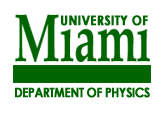 Miami is responsible for the design, fabrication and testing of the W-band, Q-band and Ka-band platelet arrays. Miami will perform the beam pattern measurements and return loss measurements of the arrays at the University of Miami. Once the platelet arrays are delivered, Miami personnel will assist in the beam pattern measurements of the telescopes, the deployment of the receivers in Chile and the subsequent observations. Miami is responsible for the design, fabrication and testing of the W-band, Q-band and Ka-band platelet arrays. Miami will perform the beam pattern measurements and return loss measurements of the arrays at the University of Miami. Once the platelet arrays are delivered, Miami personnel will assist in the beam pattern measurements of the telescopes, the deployment of the receivers in Chile and the subsequent observations.
|
| |
Faculty/Senior Scientist | PostDoctoral/Fellow | Graduate Student |
Josh Gundersen
Kevin Huffenberger
| Ricardo Bustos (now at University of Concepcion)
| Raul Monsalve
|
|
| |
|
|
| |
 Michigan will lead and oversee the development, manufacture and deployment of the three 2m telescopes for QUIET. This work includes finishing all simulations needed to finalize and characterize the optical design of the crossed-Dragonne system including the ground shield. Concurrently, they will design the mounts and coordinate with a vendor to have them manufactured. Once the first telescope is delivered the group will align and characterize the mirrors using photogrammetry or a laser tracker and then perform near field and far side lobe beam maps. They will also oversee the deployment and commissioning of these telescopes in Chile. Michigan will lead and oversee the development, manufacture and deployment of the three 2m telescopes for QUIET. This work includes finishing all simulations needed to finalize and characterize the optical design of the crossed-Dragonne system including the ground shield. Concurrently, they will design the mounts and coordinate with a vendor to have them manufactured. Once the first telescope is delivered the group will align and characterize the mirrors using photogrammetry or a laser tracker and then perform near field and far side lobe beam maps. They will also oversee the deployment and commissioning of these telescopes in Chile.
|
| |
Faculty/Senior Scientist | Graduate Student |
Jeff McMahon
| Jaclyn Sanders
|
|
| |
|
|
| |
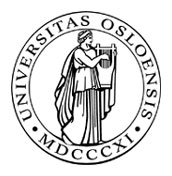 Oslo will be responsible for setting up and maintaining a data processing center (both hardware and techical support) capable of handling the expected petabyte sized data set, and developing the necessary software for reducing the raw data into high-level data products (component maps, power spectra, cosmological parameters etc.). Oslo will be responsible for setting up and maintaining a data processing center (both hardware and techical support) capable of handling the expected petabyte sized data set, and developing the necessary software for reducing the raw data into high-level data products (component maps, power spectra, cosmological parameters etc.).
|
| |
Faculty/Senior Scientist | PostDoctoral/Fellow | Graduate Student |
Hans Kristian Eriksen
| Ingunn Wehus
| Jostein R. Kristiansen
Sigurd Kirkevold Naess
|
|
| |
|
|
| |
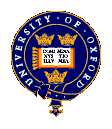 Oxford shares responsibility for the design and construction of the telescopes (optics and mounts) with Michigan, Manchester and Stanford. Oxford will seek UK funding for telescope components and can in any case provide design effort and at-cost manufacturing. With Manchester, Oxford will design and build the Ka-band polarimeter modules. Oxford will also contribute to the analysis effort, particularly with mapping software, and will seek funding for a student dedicated to QUIET operations and analysis. Oxford shares responsibility for the design and construction of the telescopes (optics and mounts) with Michigan, Manchester and Stanford. Oxford will seek UK funding for telescope components and can in any case provide design effort and at-cost manufacturing. With Manchester, Oxford will design and build the Ka-band polarimeter modules. Oxford will also contribute to the analysis effort, particularly with mapping software, and will seek funding for a student dedicated to QUIET operations and analysis.
|
| |
Faculty/Senior Scientist | PostDoctoral/Fellow | Graduate Student |
Pedro G. Ferreira
Mike Jones
Joe Silk
Ghassan Yassin
| Joe Zuntz
| David Sutton
|
|
| |
|
|
| |
 Princeton is responsible for the design realization, construction, testing and implementation of the Q- and W-band septum polarizers and of the cryomechanical wiring interconnects (FPCs) and associated protection circuitry. Princeton will also be in charge of the integration and test of one of the W-band receivers. Princeton is responsible for the design realization, construction, testing and implementation of the Q- and W-band septum polarizers and of the cryomechanical wiring interconnects (FPCs) and associated protection circuitry. Princeton will also be in charge of the integration and test of one of the W-band receivers.
|
| |
Faculty/Senior Scientist | PostDoctoral/Fellow | Graduate Student | Undergraduate Student |
Suzanne Staggs
| Kendrick Smith
| Jeff McMahon (now Assistant Professor at Michigan)
Glen Nixon (now at Tradeworx, Red Bank, NJ.)
| Vaclav Cvicek
Clinton Hansen
Madhuri Kaul
Kevin Kung
Will Serber
Joe Wolf
Sajid Zaidi
|
|
| |
ALSO PARTICIPATING:
|
|
| |
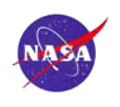 Edward Wollack brings his broad perspective to QUIET; he has provided the base design for the L/R OMTs. Edward Wollack brings his broad perspective to QUIET; he has provided the base design for the L/R OMTs.
|
| |
Faculty/Senior Scientist |
Edward Wollack
|
|
| |
|
|